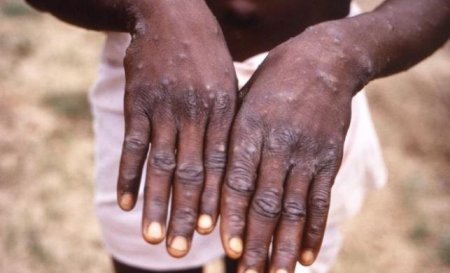P
ProfRem
Guest
The Nigeria Centre for Disease Control (NCDC) says 31 suspected cases of monkey pox have so far been reported in seven states across the country.
Dr Chikwe Ihekweazu, the National Coordinator/Chief Executive Officer of NCDC, made this known on Monday in Abuja.
Here are some ways to prevent its spread:
1. Avoid contact with animals that could harbor the virus (including animals that are sick or that have been found dead in areas where monkeypox occurs).
2. Avoid contact with any materials, such as bedding, that has been in contact with a sick animal
3. Isolate infected patients from others who could be at risk for infection
4. Practice good hand hygiene after contact with infected animals or humans. For example, washing your hands with soap and water or using an alcohol-based hand sanitizer
5. Use personal protective equipment (PPE) when caring for patients

Signs and symptoms of the disease include:
Fever, Headache, Muscle aches, Backache, Swollen lymph nodes, Chills, Exhaustion. These signs occur between 0 – 5 days of contracting the disease.
After about 1 – 3 days of appearance of fever, the patient begins to develop rashes which starts from the face and spreads to several parts of the body.
Treatment
There is no proven treatment for the disease, however, smallpox vaccine, antivirals, and vaccinia immune globulin (VIG) can be used in controlling its spread.
Dr Chikwe Ihekweazu, the National Coordinator/Chief Executive Officer of NCDC, made this known on Monday in Abuja.
Here are some ways to prevent its spread:
1. Avoid contact with animals that could harbor the virus (including animals that are sick or that have been found dead in areas where monkeypox occurs).
2. Avoid contact with any materials, such as bedding, that has been in contact with a sick animal
3. Isolate infected patients from others who could be at risk for infection
4. Practice good hand hygiene after contact with infected animals or humans. For example, washing your hands with soap and water or using an alcohol-based hand sanitizer
5. Use personal protective equipment (PPE) when caring for patients

Signs and symptoms of the disease include:
Fever, Headache, Muscle aches, Backache, Swollen lymph nodes, Chills, Exhaustion. These signs occur between 0 – 5 days of contracting the disease.
After about 1 – 3 days of appearance of fever, the patient begins to develop rashes which starts from the face and spreads to several parts of the body.
Treatment
There is no proven treatment for the disease, however, smallpox vaccine, antivirals, and vaccinia immune globulin (VIG) can be used in controlling its spread.

